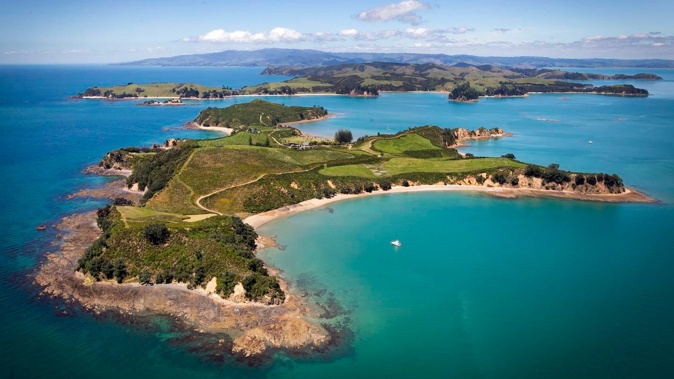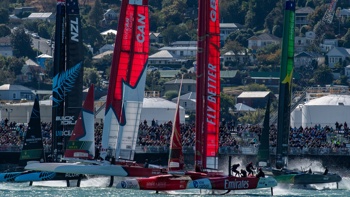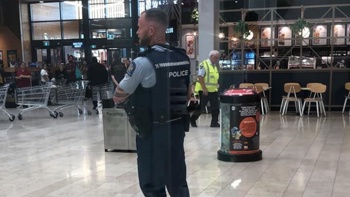
Bottom trawling will be banned in most of the Hauraki Gulf, the Government announced today, as part of a plan to better protect the 1.2-million-hectare marine park.
One of the four options that will be put into public consultation next week stipulates bottom-trawling and Danish seining would be banned from 89 per cent of the Gulf.
Currently, 27 per cent of the Gulf is closed to bottom trawling and Danish seining fishing methods.
Oceans and Fisheries Minister Rachel Brooking said they have listened to the complaints of Aucklanders wanting greater protection of their “beloved blue backyard”.
“The Gulf is a taonga with deep-rooted historical importance for tangata whenua, a vital part of our society and of our tourism, transport and seafood sectors, with an economic value of $100 billion,” Brooking said.
“But it’s in trouble, and we have to strike the right balance between being able to use it, and making sure it’s healthy and available for our grandchildren.
“At the moment, bottom-trawling and Danish seining are banned in just over a quarter of the Gulf’s waters. Today, I am announcing options that would see this ban go from current protection levels of just over a quarter to up to nine-tenths.”
The ban was foreshadowed this month when Prime Minister Chris Hipkins revealed the establishment of new marine protection areas and a ban on the controversial fishing method.
At the time, Hipkins was asked why bottom trawling would not be banned altogether, to which he replied by explaining a complete ban was not off the table.
/cloudfront-ap-southeast-2.images.arcpublishing.com/nzme/OPBB4IIGLJE6RKFHDR7EVDWR5M.jpg)
Prime Minister Chris Hipkins announced new protection measures for the Hauraki Gulf at the Tamaki Yacht Club earlier this month. Photo / Jason Oxenham
Brooking said today that a complete ban was considered, but there were concerns that boats would simply move to areas outside the Hauraki Gulf Marine Park, especially Northland and the Bay of Plenty, putting extra pressure on the fisheries in those areas.
Bottom trawling involves dragging weighted nets over the seafloor to catch fish and is often favoured by commercial fishing companies as it can catch large quantities in one go.
The wide-ranging restriction on bottom trawling is just one of the actions the Government is taking to protect the Hauraki Gulf, explained Brooking.
“Sedimentation, nutrient run-off and climate change all threaten the health of the Gulf,” Brooking said.
The Government plans to introduce the Hauraki Gulf/Tīkapa Moana Marine Protection Bill into Parliament before the House rises, nearly tripling the total area under protection in the Hauraki Gulf Marine Park from just over 6 per cent to about 18 per cent.
The bill includes:
- Extending the country’s first marine reserve, Cape Rodney – Okakari Pt Marine Reserve (Goat Island) and Whanganui A Hei (Cathedral Cove) Marine Reserve, on the Coromandel Peninsula.
- Creating 12 new high protection areas to protect and restore marine ecosystems, while allowing for customary practices of tangata whenua.
- Five new seafloor protection areas to preserve sensitive seafloor habitats by prohibiting bottom-contact fishing methods and other activities that harm the seafloor.
Brooking said the plan “overturns the presumption that bottom-trawling and Danish seining can be used everywhere except in specified areas”.
“Instead, they will be banned everywhere except in very specific and limited places, called trawl corridors, or Bottom Fishing Access Zones,” Brooking said.
“Today I’m announcing the options for those corridors and inviting people to have their say from next week on which option they support.”
/cloudfront-ap-southeast-2.images.arcpublishing.com/nzme/GXC5233KZNE7ZDWPR6Z5LS4QSQ.jpg)
Oceans and Fisheries Minister Rachel Brooking said they have listened to Aucklanders calling for more protection. Photo / Supplied
The bill will be debated for the first time in Parliament today, and Hipkins envisaged the bill would become law early next year. The opening of public consultation on the trawl corridors begins next week on September 4.
The other submissions on the trawl corridors proposed are:
Option 1: Danish seine fishing banned from 74.1 per cent and trawl fishing banned from 77.1 per cent of the Gulf shallower than 200m, with these fishing methods limited to six defined zones.
Option 2: Trawl and Danish seine fishing banned from 79.4 per cent and trawl fishing banned from 82.4 per cent of the Gulf shallower than 200m, and limit these fishing methods to five defined zones.
Option 3: Trawl and Danish seine fishing banned from 86.6 per cent and trawl fishing banned from 88.5 per cent of the Gulf shallower than 200m, and limit these fishing methods to four defined zones.
Option 4: Danish seine fishing banned from 87.3 per cent and trawl fishing banned from 89 per cent of the Gulf shallower than 200m, and limit these fishing methods to four defined zones.
In areas of the Gulf that are below 200 metres - about 3.4 per cent of the marine park - a different process will be undertaken to access any new laws.
WWF-New Zealand welcomed the announcement.
“The seafloor, particularly around sensitive habitats like seamounts, has delicate and fragile ecosystems that take thousands of years to grow but only seconds to destroy,” the conservation group’s chief executive Dr Kayla Kingdon-Bebb said.
“Bottom trawling is an indiscriminate fishing method that devastates everything in its path, and releases tonnes of carbon dioxide in the process.”
Seafood New Zealand was however concerned some commercial fishing methods had been “mischaracterised” and said the consultation process risked being “ineffective” if people didn’t understand how they worked.
Bottom trawling was used to catch more than 70 per cent of New Zealand’s commercially-caught fish, the industry group said, and was mostly done over sandy, muddy surfaces in well-established fishing grounds.
In the Hauraki Gulf, fishers were already limiting their fishing to grounds where they’d fished for many years, chief executive Dr Jeremy Helson said.
“Moving the fishing effort outside the Hauraki Gulf Marine Park means more fuel use and increased costs which means fish could become less accessible to New Zealanders,” he said.
“It could have other unintended consequences that don’t actually help achieve a healthier gulf.”
Take your Radio, Podcasts and Music with you









